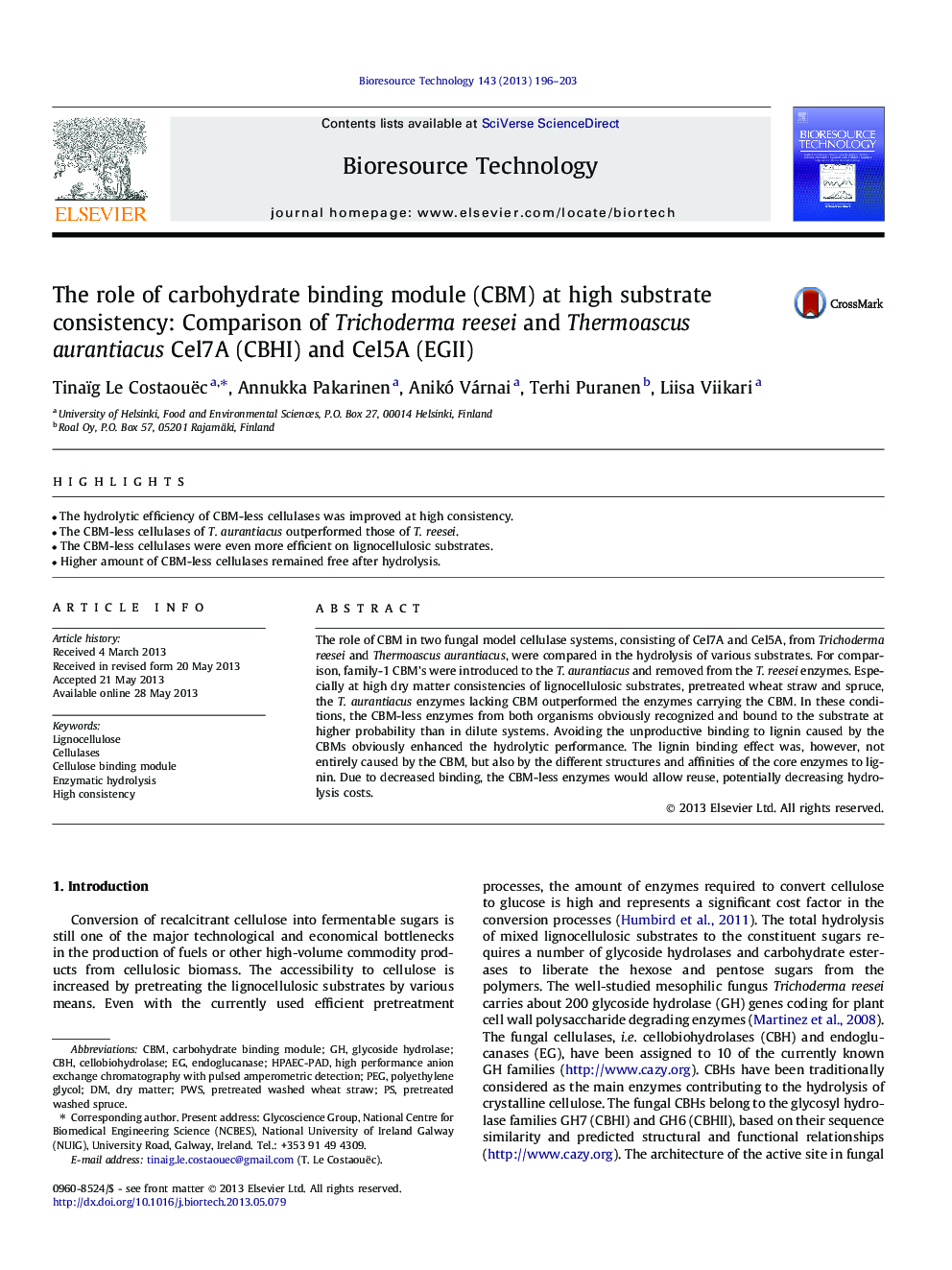| Article ID | Journal | Published Year | Pages | File Type |
|---|---|---|---|---|
| 7081531 | Bioresource Technology | 2013 | 8 Pages |
Abstract
The role of CBM in two fungal model cellulase systems, consisting of Cel7A and Cel5A, from Trichoderma reesei and Thermoascus aurantiacus, were compared in the hydrolysis of various substrates. For comparison, family-1 CBM's were introduced to the T. aurantiacus and removed from the T. reesei enzymes. Especially at high dry matter consistencies of lignocellulosic substrates, pretreated wheat straw and spruce, the T. aurantiacus enzymes lacking CBM outperformed the enzymes carrying the CBM. In these conditions, the CBM-less enzymes from both organisms obviously recognized and bound to the substrate at higher probability than in dilute systems. Avoiding the unproductive binding to lignin caused by the CBMs obviously enhanced the hydrolytic performance. The lignin binding effect was, however, not entirely caused by the CBM, but also by the different structures and affinities of the core enzymes to lignin. Due to decreased binding, the CBM-less enzymes would allow reuse, potentially decreasing hydrolysis costs.
Keywords
Related Topics
Physical Sciences and Engineering
Chemical Engineering
Process Chemistry and Technology
Authors
Tinaïg Le Costaouëc, Annukka Pakarinen, Anikó Várnai, Terhi Puranen, Liisa Viikari,
